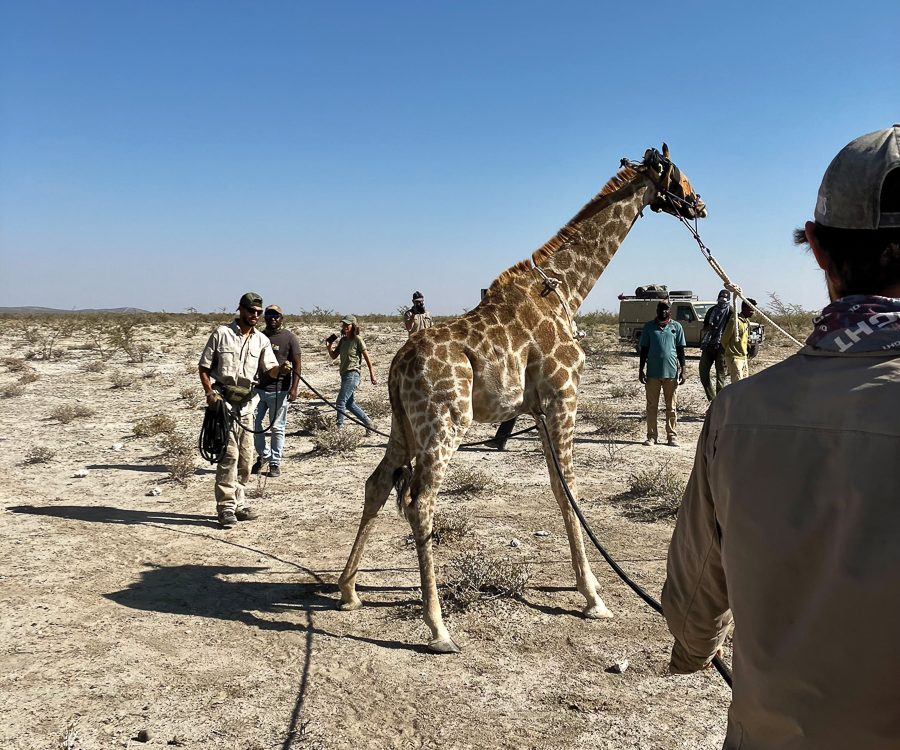Kolmanskop Namibia: a jazz band serenades ghosts
March 6, 2013Gatheman restaurant still tops for local zest
March 14, 2013By Ron Swilling
Responsible rhino tourism
With recent successes in reintroducing endangered black rhino into historical ranges, rhino tourism will continue to expand, bringing sorely needed revenue into otherwise impoverished communities.
The Save the Rhino Trust (SRT), with the cooperation of the Ministry of Environment and Tourism (MET), has been at the forefront of efforts to develop a Responsible Rhino Tourism protocol, allowing tourists to see these unique animals in their natural environment, with minimal disturbance to their behaviour patterns.
(READ ABOUT A FACE TO FACE ENCOUNTER WITH KUNENE BLACK RHINO)
Conservancies taking part in the MET Custodianship Programme are required to hire game guards, who are trained by the SRT to follow the recommended guidelines. For self-guided touring, the following procedures should always be followed. In addition to the obvious dangers posed to humans, failure to follow such common-sense suggestions can have a long-term negative impact on rhino behaviour, their condition and breeding performance. Any irresponsible tourism practices that you observe should be reported to the MET, or the SRT.
Stay on track: Driving off-road to approach a rhino destroys sensitive desert vegetation while encouraging other tourists to follow suit.
Respect waterholes: Desert rhino need to drink at least once every other day, so avoid camping within one kilometre of any waterhole.
Keep your distance: A minimum of 100 metres has been found to be a reasonable distance for viewing a sleeping rhino, for a maximum period of 20 minutes. The closest approach to an alert rhino should be 150 metres, and it should be for no longer than five minutes. Most desert rhino will tolerate viewing at these times and distances without taking off.
Note the wind direction: Always observe rhino from downwind.
Be patient: Do not attempt to wake a sleeping rhino; remain at a safe distance, and be patient.
Keep your seats: Unless accompanied by a skilled tracker, do not approach a desert rhino on foot.
Do not attempt viewing rhino with young: Avoid trying to view and disturbing rhino cows with small calves until the calf is at least six months old.
With more than a ninety per cent decrease in the population by the 1980s, the thick-skinned, horn-snouted beast is listed as critically endangered on the IUCN Red Data List of Endangered Species.
Pushed to the brink of extinction by illegal poaching for its keratin horn used in Chinese medicine and for the crafting of dagger handles, a few concerned individuals swung the pendulum around for the black rhino Diceros bicornis bicornis in Namibia.
They initiated conservation groups, tactics and training to preserve one of the last free-roaming populations to grace our planet.
The large browser, with its prehensile upper lip, also giving it the name hook-lipped rhino, was given another chance by groups such as Save the Rhino Trust, working in conjunction with conservancy programmes and the Namibian Government.
One-time poachers became game guards, the rhino gained value amongst locals as a tourist draw card, and the state began a custodianship programme to translocate surplus black rhino to qualified private landowners in an attempt to stabilise and enlarge the population.
But I am ahead of myself. Briefed the night before by the guide, we clambered into the open vehicle in the crisp early hours of the morning.
Our group, a motley bunch, huddled under colourful blankets as we drove out into the cool day. We negotiated the rough roads and rocky riverbeds as we scanned the surroundings – a rhino larder, dotted with the latex-filled euphorbia succulents that form part of the rhino’s herbivorous diet, but are lethal to humans.
Regal gemsbok, zebra and springbok clattered away across the stony soil, generously clad this winter season in a lush gown of golden-yellow grass. At every crossing, our trackers scrutinised the sand for fresh tracks. The sandy riverbeds are information boards, enlightening those who are conversant in their language as to which animals have passed through and how long ago.
The trackers are master interpreters. Tracking is a skill and language they know well, having learnt it through growing up in the bush.
They are able to recognise several of the rhino and look out for distinguishing marks, such as nicks in the ears that provide valuable identification material, which assists in the monitoring process. As the sun rose higher in the sky, the animals began to disappear into the coolness of the shadows.
The midday heat also signalled it was time for a lunch break and for group members to stretch their legs. A clearing next to a mopane tree became our Damaraland dining room as tables and chairs were brought out in true lodge fashion. We sat comfortably in the dusty bush, surrounded by earth scattered with old elephant and gemsbok dung, and dined on an assortment of salads and cold cuts.
This article appeared in the Autumn 2012 edition of Travel News Namibia.




